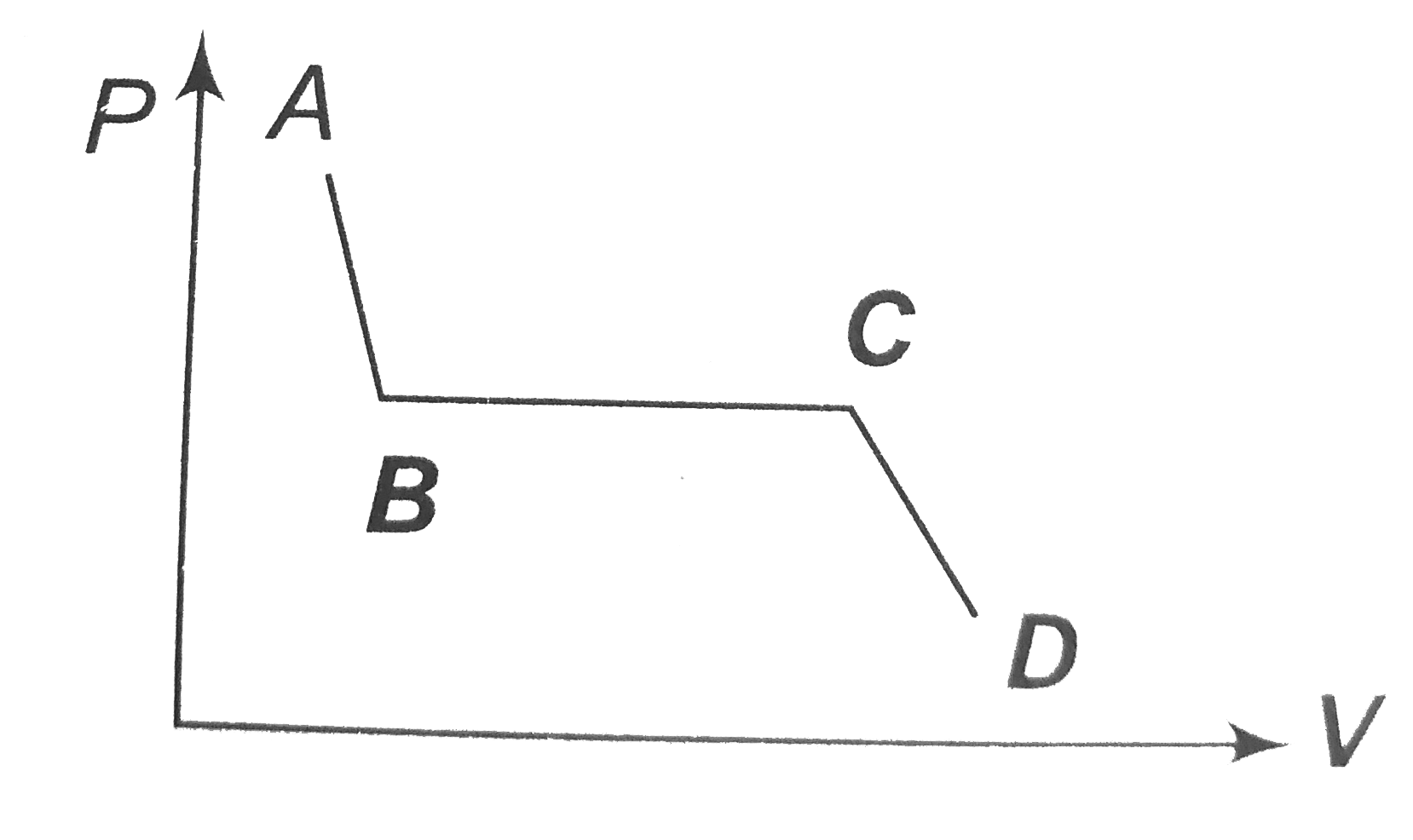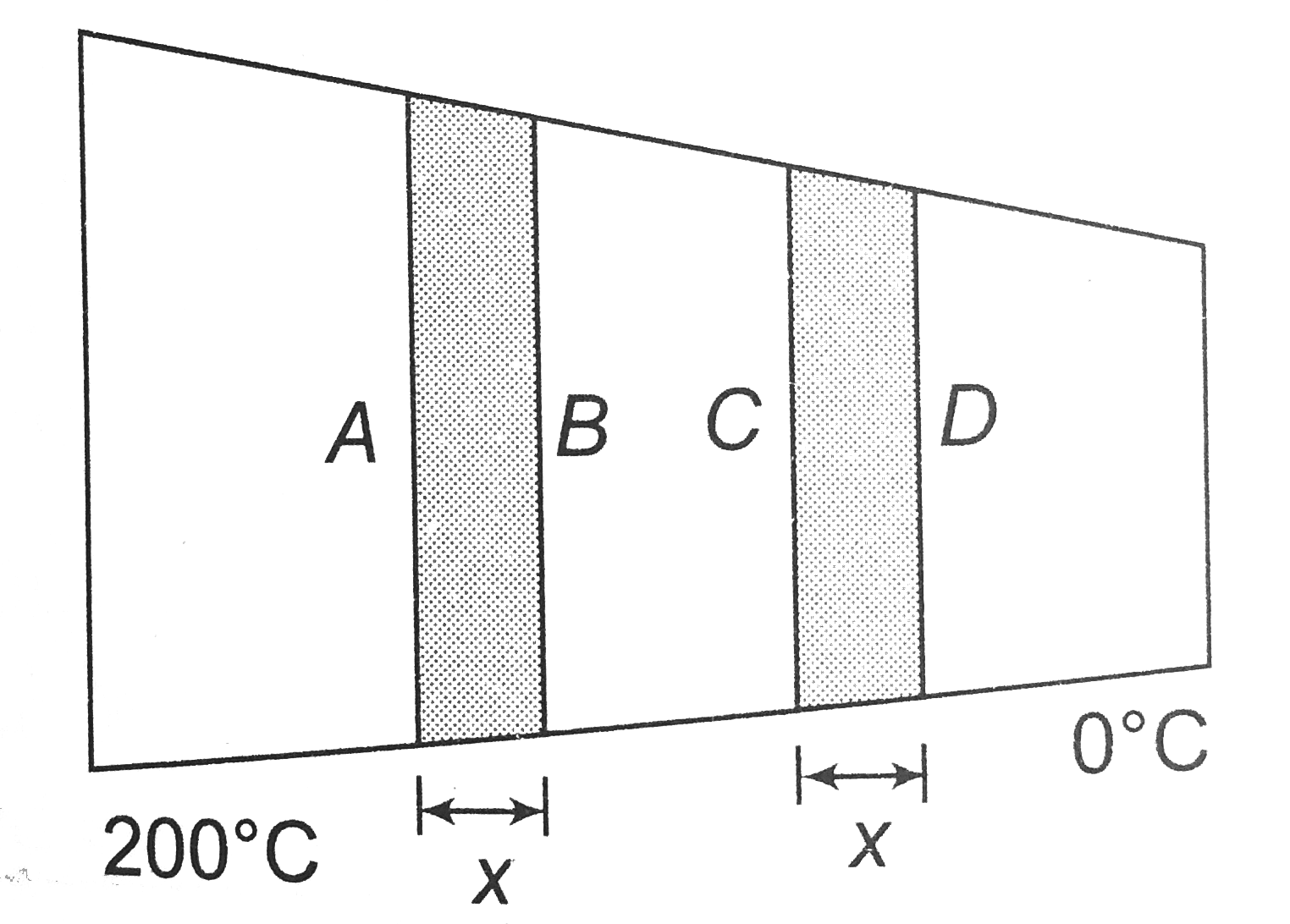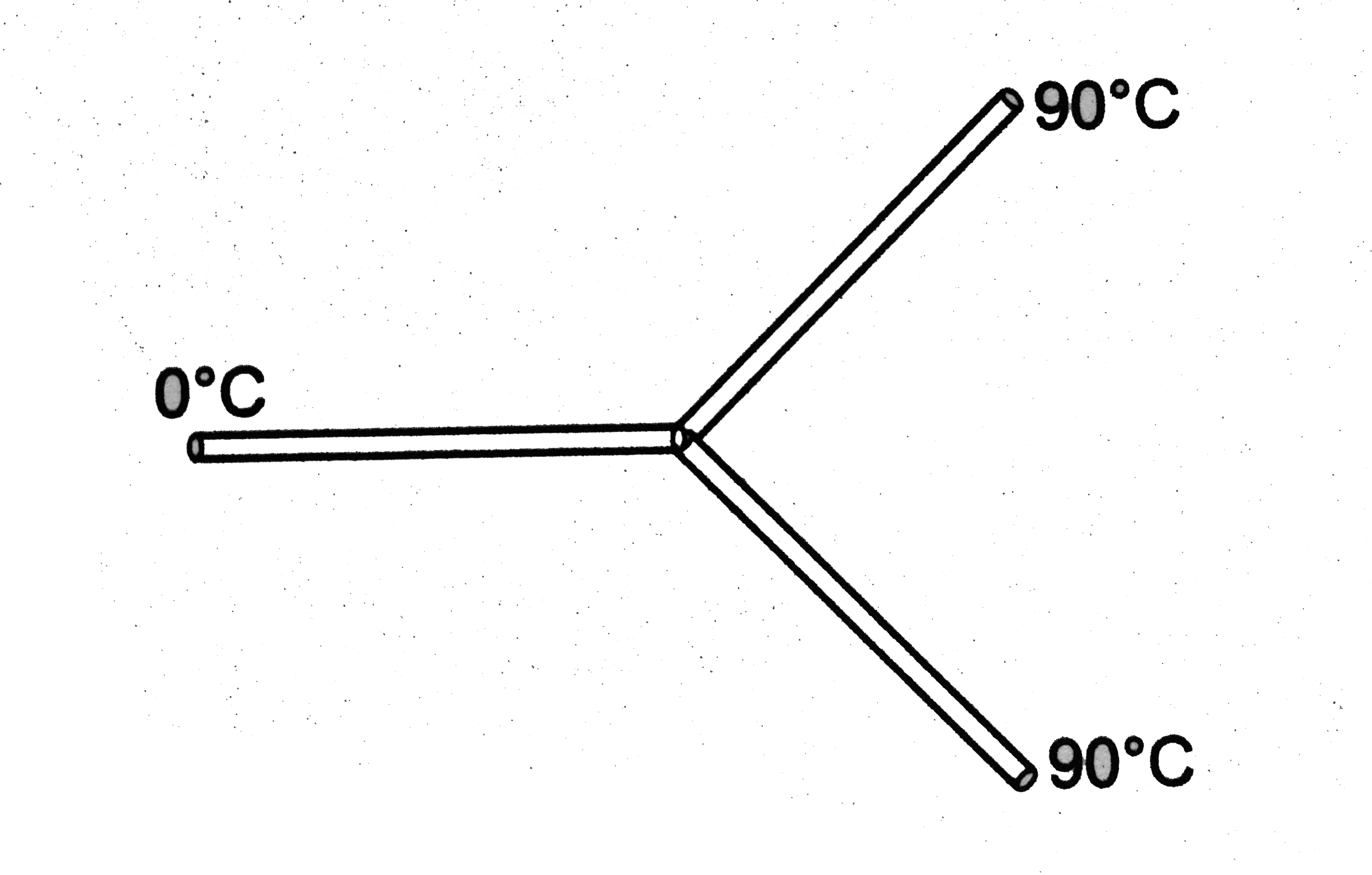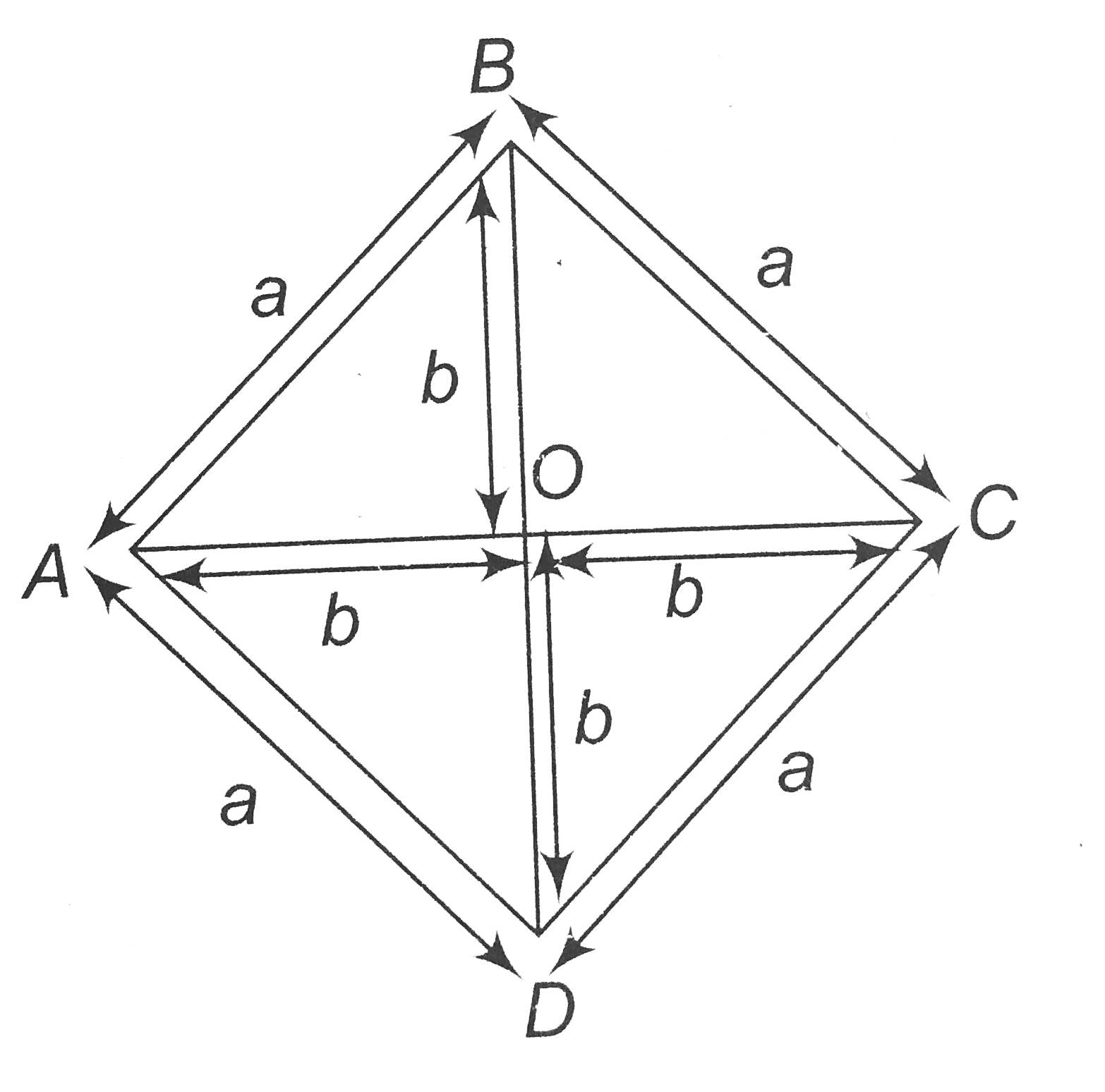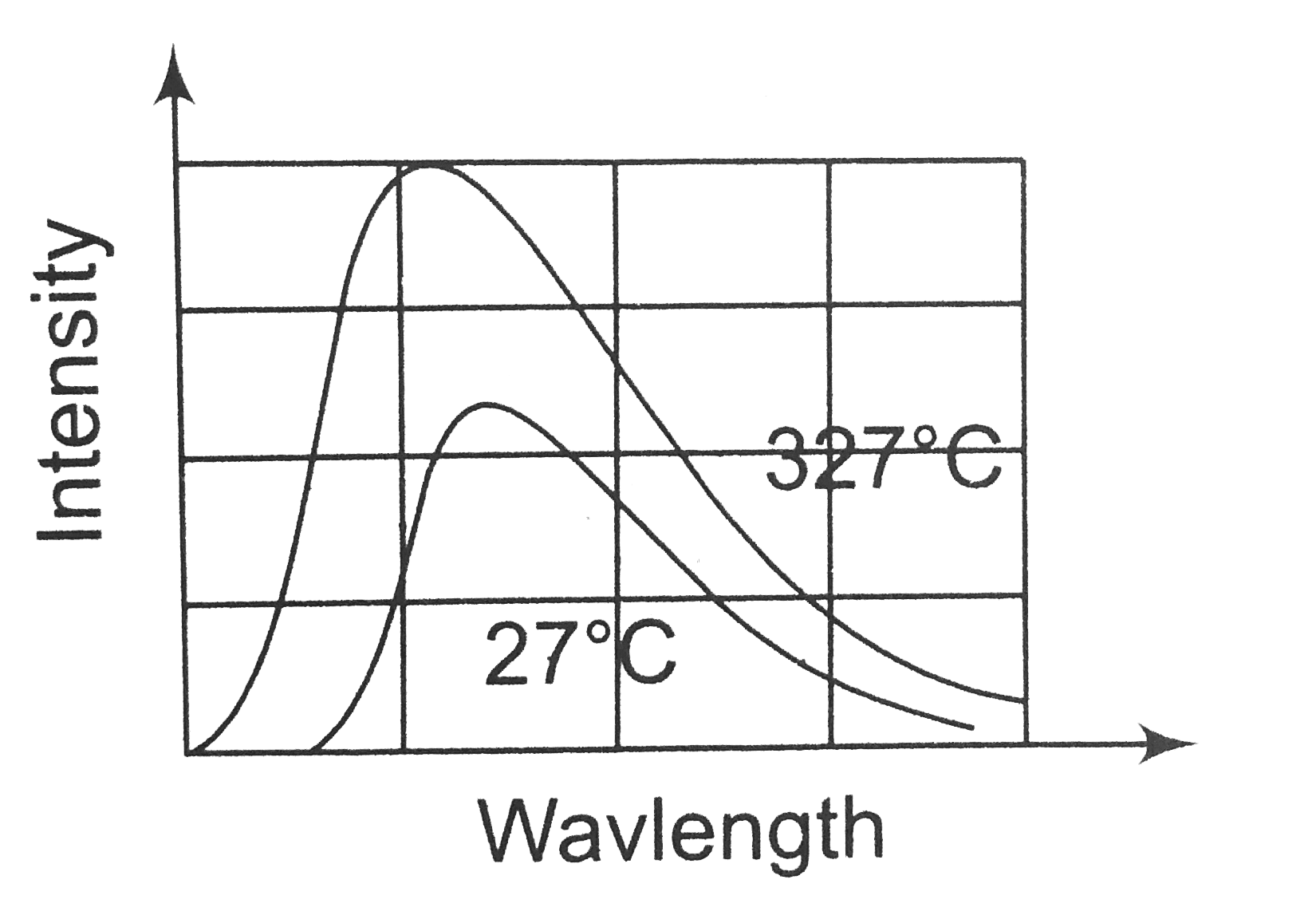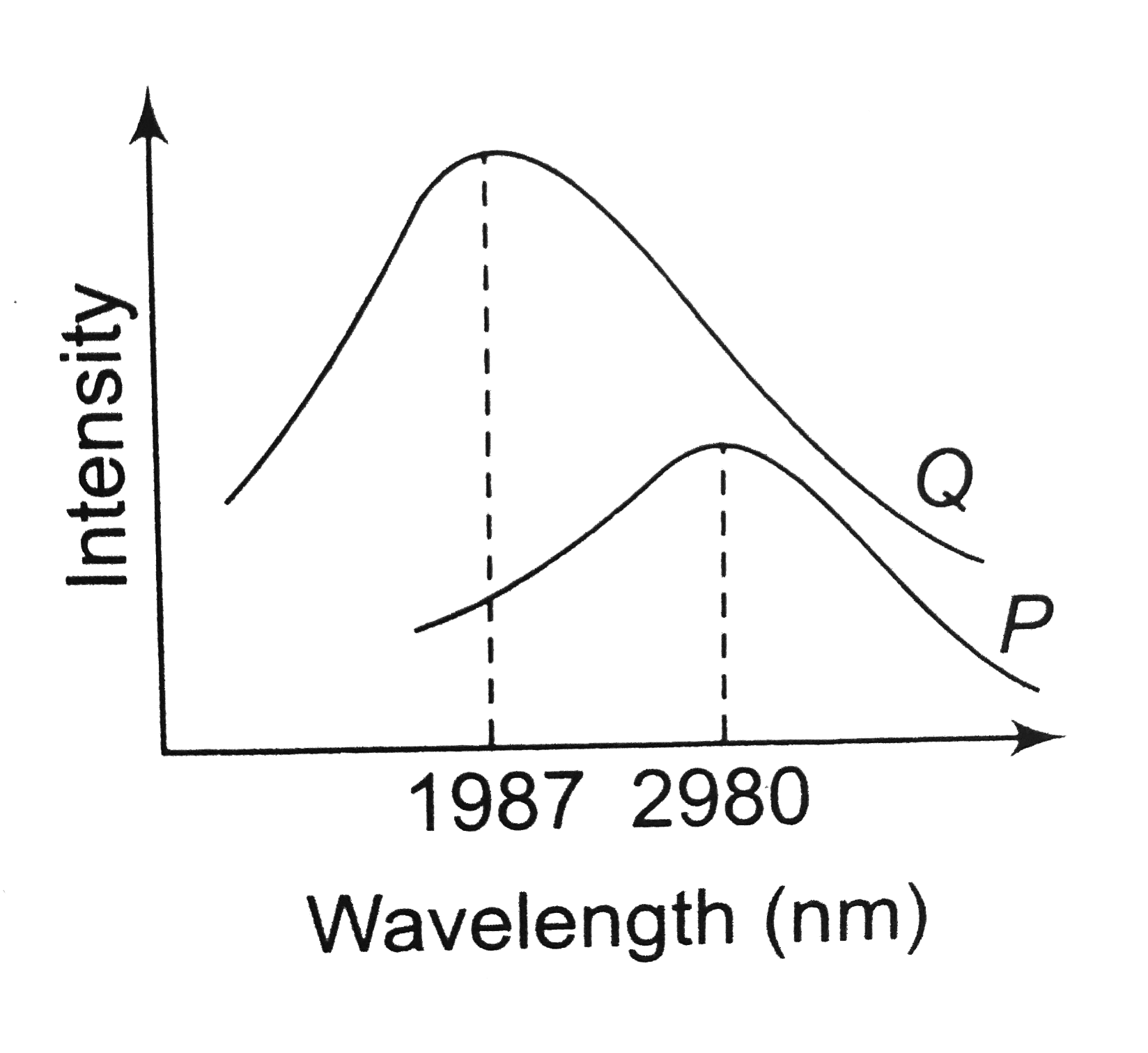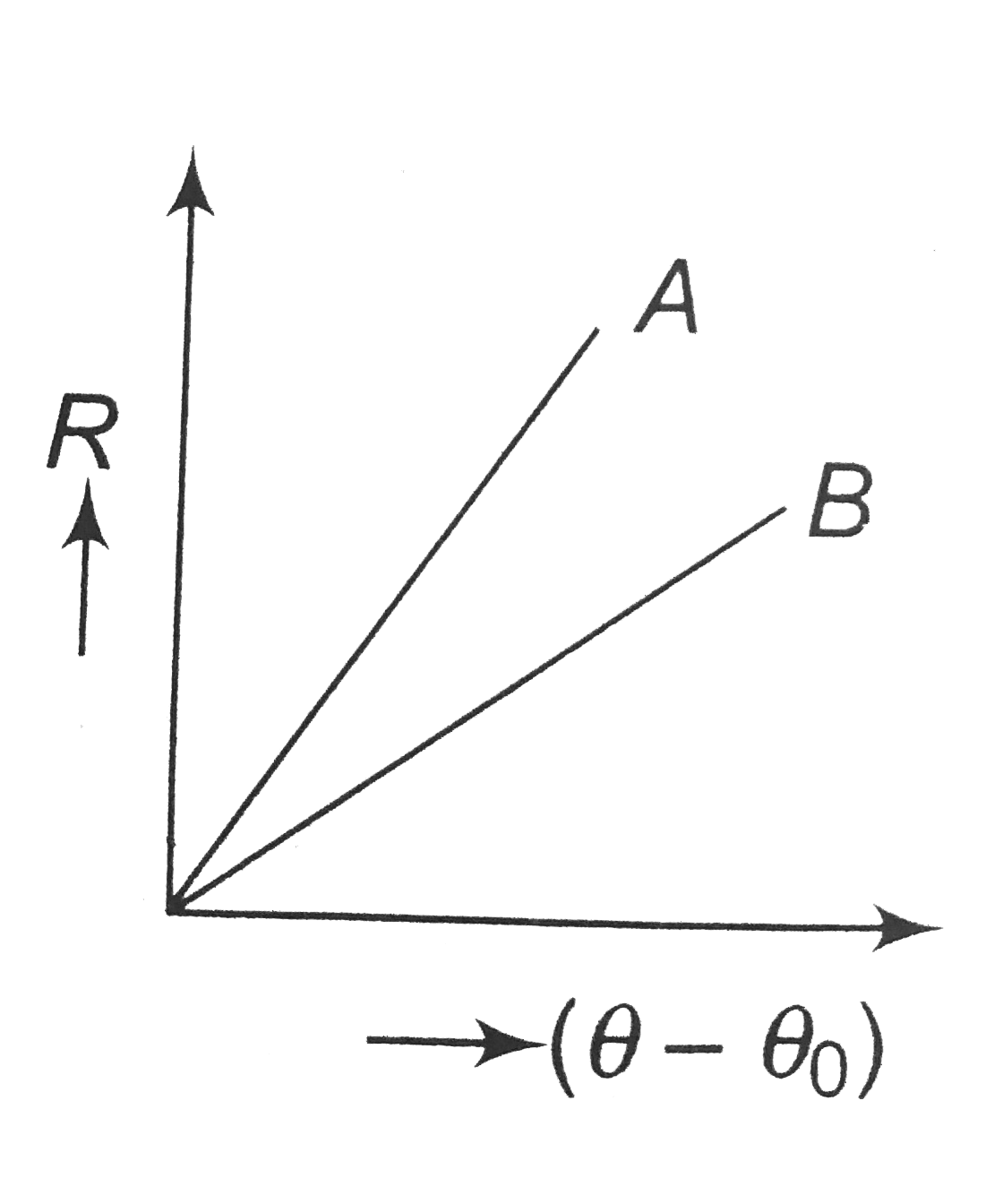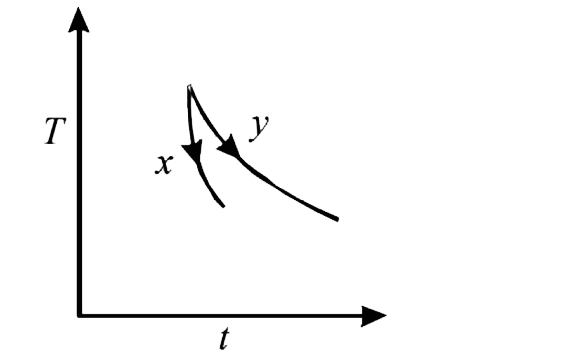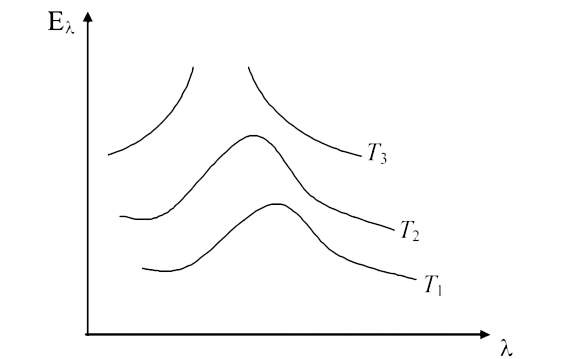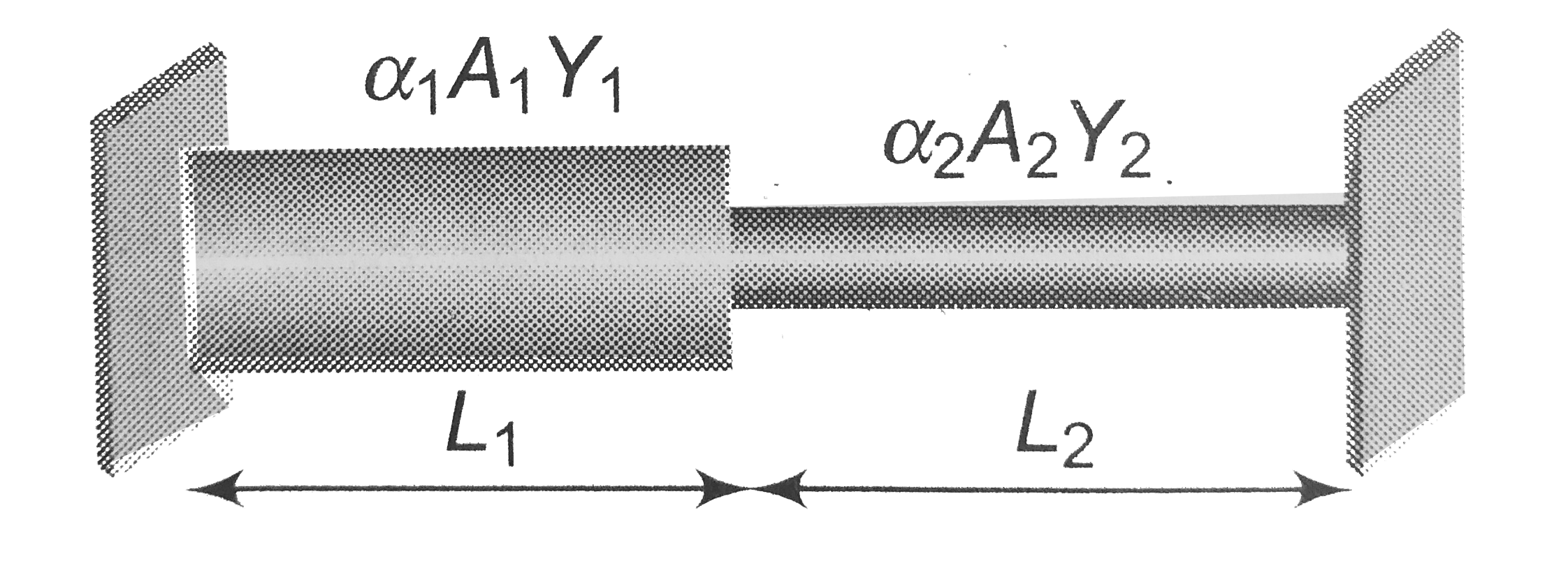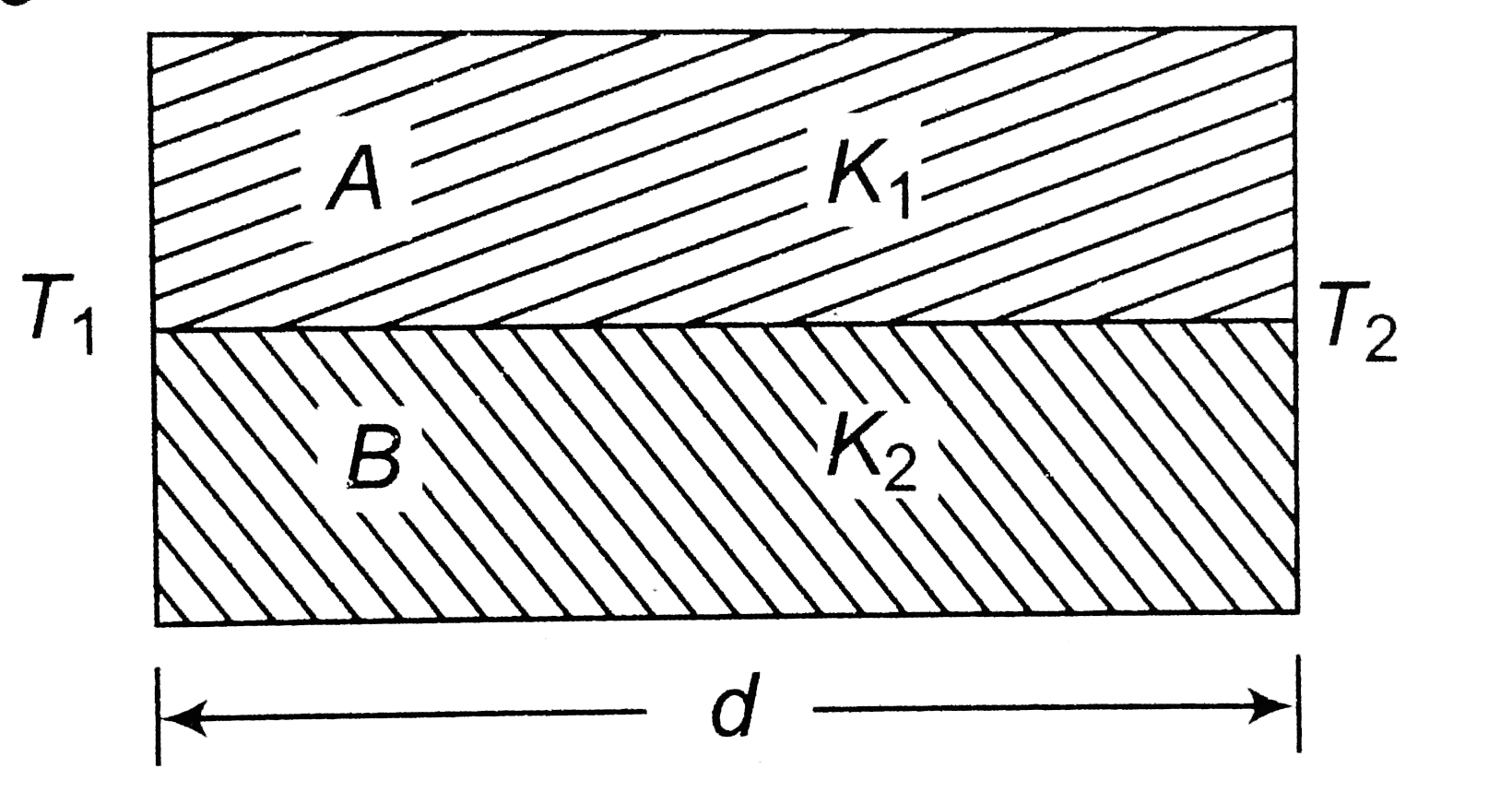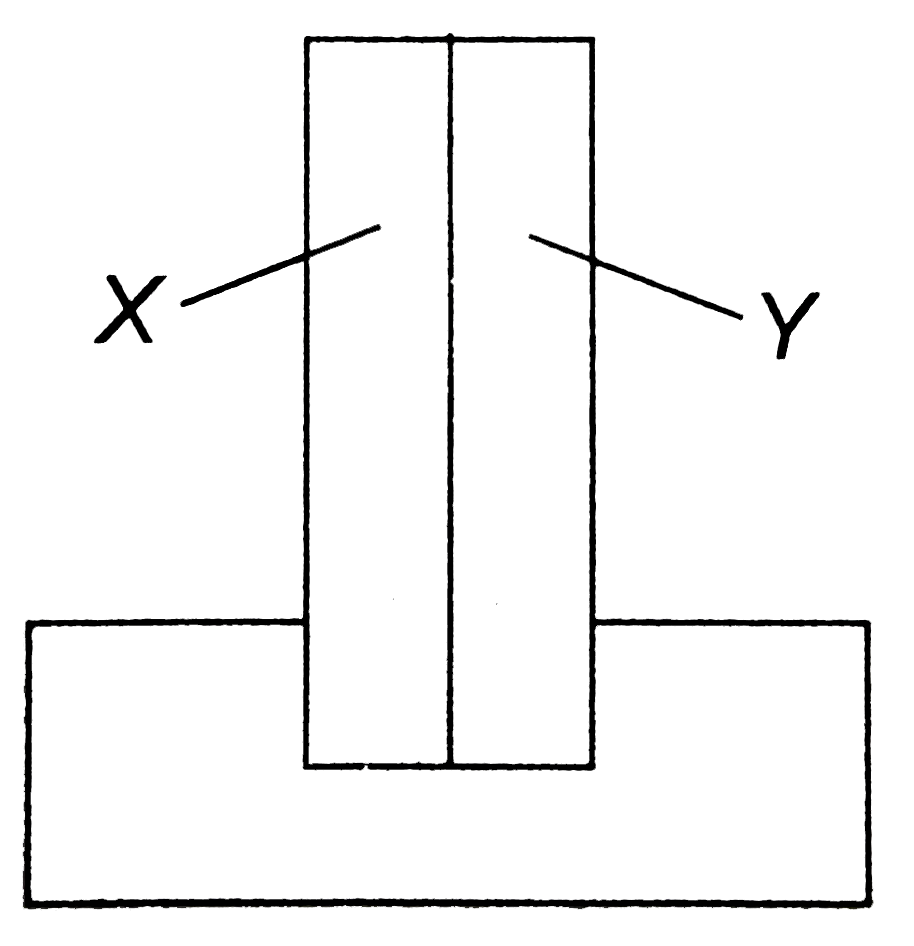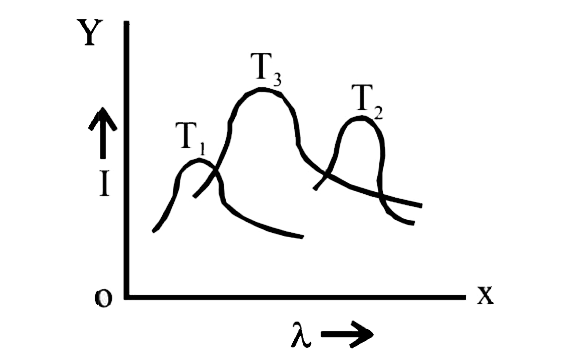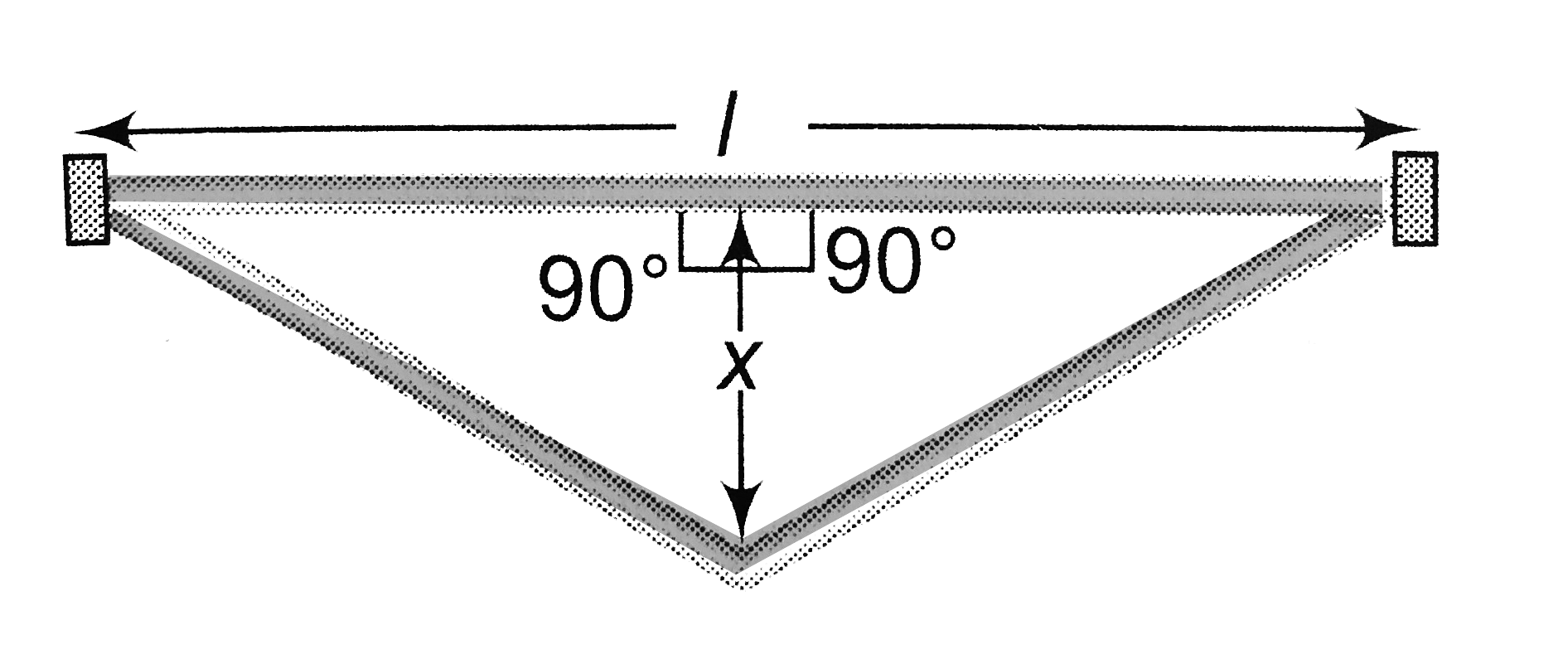Problems Baesd On Mixed Concepts from A2Z PHYSICS (HINGLISH) THERMAL PROPERTIES OF MATTER for Class 11
| Class 11 | PHYSICS |
| Chapter | THERMAL PROPERTIES OF MATTER |
| A2Z PHYSICS (HINGLISH) | Problems Baesd On Mixed Concepts |
| Medium | English |
| Academic Year | 2023-2024 |
Question 8
A glass flask of volume one liter at 0∘C is filled, level full of mercury at this temperature. The flask and mercury are now heated to 100∘C. How much mercury will spill out if coefficient of volume expansion of mercury is 1.82×10−4/∘C and linear expansion of glass is 0.1×10−4/∘C respectively?View SolutionQuestion 10
A piece of metal weighs 46 g in air and 30 g in lipuid of density 1.24×103kgm−3 kept at 270C. When the temperature of the liquid is raised to 420C the metal piece weights 30.5 g . The density of the liqued at 420C is 1.20×103kgm−3. Calculate the coefficient of linear expandsion of the metal.View SolutionQuestion 18
A 30.0cm long metal rod expands by 0.0650cm when its temperature is raised from 0∘C to 100∘C. A second rod of different metal and of the same length expands by 0.0350cm for the same rise in temperature. A third composite rod, also 30.0cm long, is made up of pieces of each of the above metals placed end to end and expands by 0.0580cm when temperature is increased from 0∘C to 100∘C. the length of the longer portion of the composite bar in cm at 0∘C isView SolutionQuestion 20
In the shown planar frame made of thin uniform rods, the length of section AB and EF is l1 and its thermal linear coefficient of expansion is α1. The length of section CD is l2 and its thermal linear coefficient of expansion is α2.CBandDE are of same length having thermal linear coefficient of expansion α2. point A,B,EandF reside on same line, that is, sections ABandEF overlap. then the ratio of l1l2 for which the distance between end A and end F remains the same at all temperatures, is
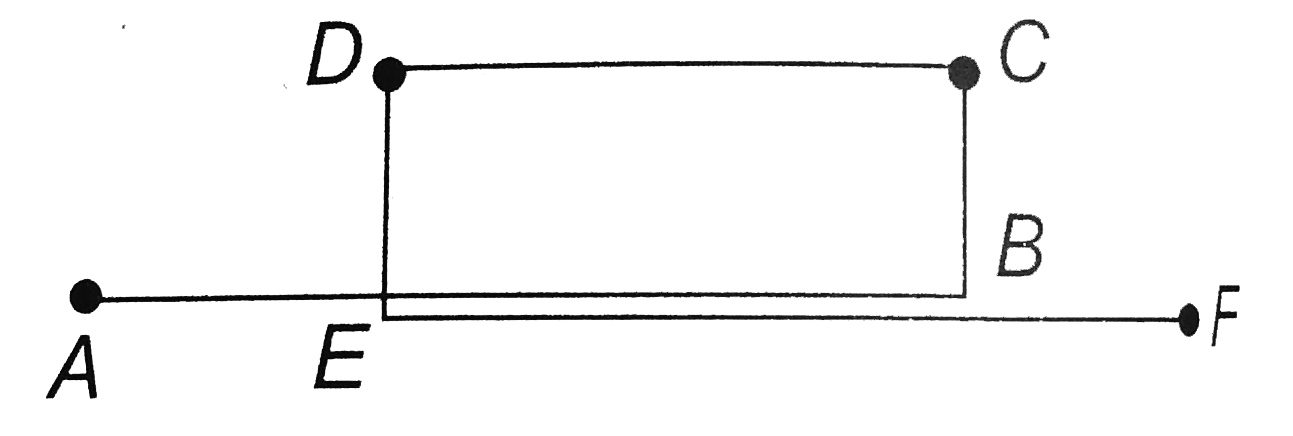 View Solution
View SolutionQuestion 22
An isosceles triangle is formed with a thin rod of length l1 and coefficient of linear expansion α1, as the base and two thin rods each of length l2 and coefficient of linear expansion α2 as the two sides. The distance between the apex and the midpoint of the base remain unchanged as the temperature is varied. the ratio of lengths l1l2 is
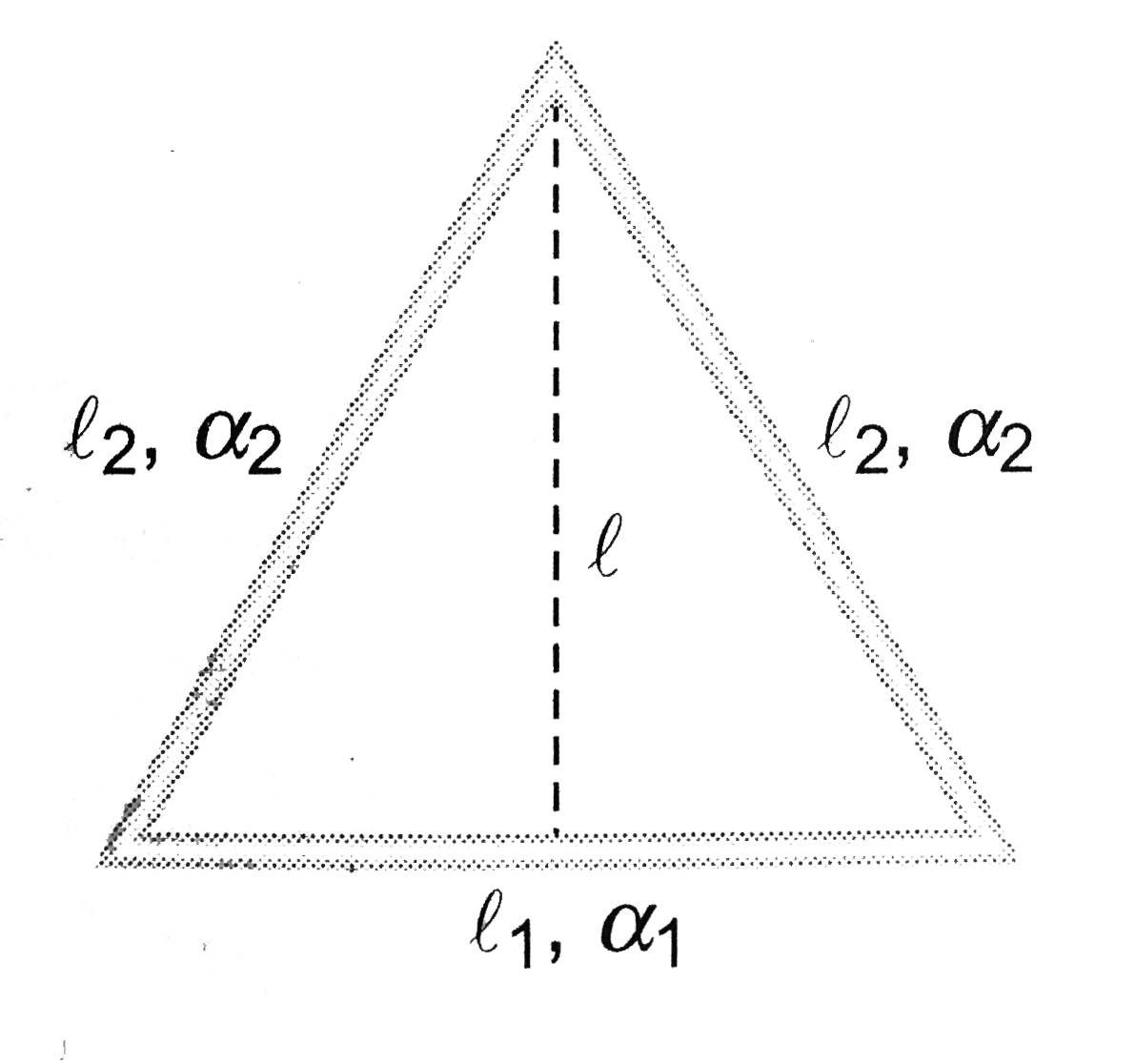 View Solution
View SolutionQuestion 24
A brass wire 1.8m long at 27∘C is held taut with little tension between two rigid supports. If the wire cooled to a temperature of −39∘C, what is the tension developed in the wire, if its diameter is 2.0mm? Coefficient of linear expansion of brass =2.0×10−5/∘C, Young's modulus of brass =0.91×1011Pa.View SolutionQuestion 25
A steel tape 1m long is correctly calibrated for a temperature of 27.0∘C. The length of a steel rod measured by this tape is found to be 63.0cm on a hot day when the temperature is 45∘C. Coefficient of linear expansion of steel =1.20×10−5/K. what is the actual length of the steel rod on that day?View SolutionQuestion 30
A thin rod of negligible mass and a cross-section of 2×10−6m2 suspended vertically from one end, has a length of 0.5m at 200∘C. The rod is cooled at 0∘C, but prevented from contracting by attaching a mass at the lower end. The value of this mass is : (Young's modulus =1011N/m2, Coefficient of linear expansion 10−5K−1andg=10m/s2):View SolutionQuestion 31
A rod of length 1000 mm and co-efficient of linear expansion α=10−4 per degree celsius is placed in horizontal smooth surface symmetrically between fixed walls separated by 1001 mm. The young's modulus of rod is 1011N/m2. If the temperature is increased by 20∘C, then the stress developed in the rod is (in N/m2)View SolutionQuestion 35
A uniform pressure P is exerted by an external agent on all sides of a solid cube at temperature t∘C. By what amount should the temperature of the cube be raised in order to bring its volume back to its original volume before the pressure was applied if the bulk modulus is B and co-efficient of volumetric expansion is γ?View SolutionQuestion 37
A small quantity mass m, of water at a temperature θ(in ∘C) is poured on to a larger mass M of ice which is at its melting point. If c is the specific heat capacity of water and L the specific heat capacity of water and L the specific latent heat of fusion of ice, then the mass of ice melted is give by View SolutionQuestion 53
A thermal insulated vessel contains some water at 0∘C. The vessel is connected to a vacuum pump to pump out water vapour. This results in some water getting frozen. It is given latent heat of vaporization of water at 0∘C=21×105J/kg and latent heat of freezing of water =3.36×105J/kg. the maximum percentage amount of water vapour that will be solidified in this manner will be:View SolutionQuestion 54
Two solid bodies of equal mass m initially at T=0∘C are heated at a uniform and same rate under identical conditions. The temperature of the first object with latent heat L1 and specific heat capacity in solid state C1 changes according to graph 1 on the diagram. the temperature of the second object withe latent heat L2 and specific heat capacity in solid state C2 changes according to graph 2 on the diagram. based on what is shown on the graph, the latent heat L1andL2 and the specific heat capacities C1andC2 in solid state obey which of the following relationships?
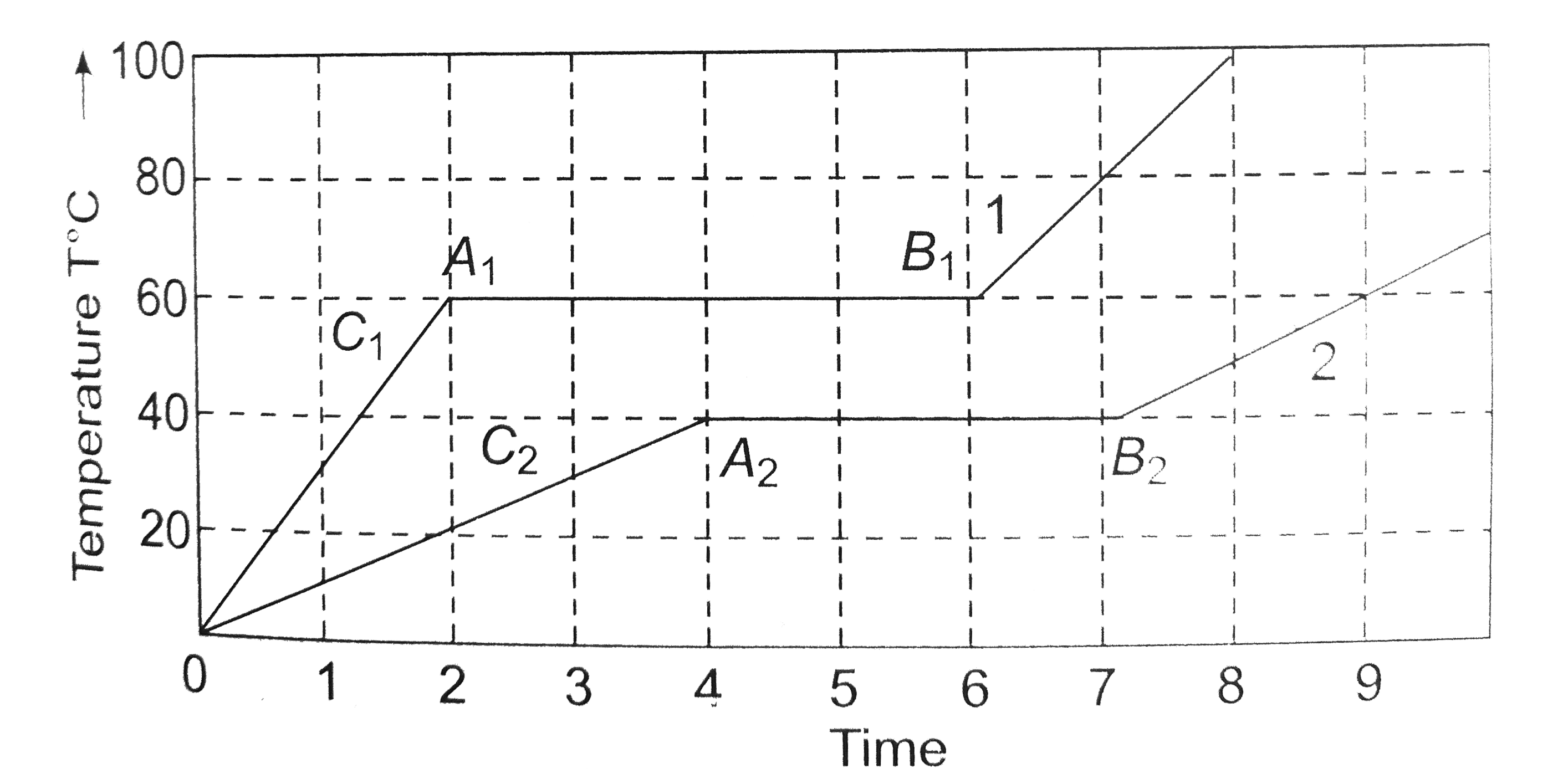 View Solution
View SolutionQuestion 55
A solid ball of mass 10kg at 40∘C is gently placed in a liquid of mass 20kg at 20∘C and of specific heat capacity 1cal/gm−∘C. When the thermal equilibrium is attained, temperature of the system is 35∘C. The specific heat capacity of solid ball is. Neglect heat capacity of the vessel.View SolutionQuestion 57
The mass, specific heat capacity and the temperature of a solid are 1000g,12calg∘C and 80∘C respectively. The mass of the liquid and the calorimeter are 900g and 200g. Initially,both are at room temperature 20∘C Both calorimeter and the solid are made of same material. In the steady state, temperature of mixture is 40∘C, then specific heat capacity of the unknown liquid. View SolutionQuestion 58
Four cubes of ice at −10∘C each one gm is taken out from the refrigerator and are put in 150gm of water at 20∘C. The temperature of water when thermal equilibrium is attained. Assuming that no heat is lost to the outside and water equivalent of container is 46gm. (Specific heat capacity of water =1cal/gm−∘C, Specific heat capacity of ice =0.5cal/gm−∘C, Latent heat of fusion of ice =80cal/gm−∘C)View SolutionQuestion 61
Water of mass m2=1kg is contained in a copper calorimeter of mass m1=1kg. Their common temperature t=10∘C. Now a piece of ice of mass m2=2kg and temperature is −11∘C dropped into the calorimeter. Neglecting any heat loss, the final temperature of system is. [specific heat of copper =0.1Kcal/kg∘C, specific heat of water =1Kcal/kg∘C, specific heat of ice =0.5Kcal/kg∘C, latent heat of fusion of ice =78.7Kcal/kg]View SolutionQuestion 62
An ice block at 0∘C and of mass m is dropped from height 'h' such that the loss in gravitational potential energy of block is exactly equal to the heat required to just completely melt the ice. Taking latent heat of fusion of ice =80cal/gm, acceleration due to gravity =10m/s2 and mechanical equivalent of heat =4.2J/Cal. the value of 'h' is View SolutionQuestion 67
A 10kW drilling machine is used to drill a bore in a small aluminium block of mass 8.0kg. How much is the rise in temperature of the block in 2.5 minutes, assuming 50% of power is used up in heating the machine itself or lost to the surrounding? Specific heat of aluminium =0.91J/g∘C.View SolutionQuestion 72
A child running a temperature of 101∘F is given an antipyrine (i.e. a medicine that lowers fever) which causes an increase in the rate of evaporation of sweat from his body. If the fever is brought down to 98∘F in 20min, what is the average rate of extra evaporation caused by the drug? Assume the evaporation mechanism to be the only way by which heat is lost. the mass of the child is 30kg. the specific heat of human body is approximately the same as that of water, and latent heat of water at that temperature is about 580cal/g.View SolutionQuestion 73
A piece of ice of mass 50g exists at a temperature of −20∘C. Determine the total heart required to covert it completely to steam at 100∘C. (Specific heat capacity of ice =0.5cal/g−∘C, specific latent heat of fusion for ice =80cal/g and specific latent heat of vaporization for water =540cal/g).View SolutionQuestion 74
A metal piece weighing 15g is heated to 100∘C and then immersed in a mixture of ice and water at the thermal equilibrium. The volume of the mixture is found to be reduced by 0.15cm3 with the temperature of mixture remaining constant. Find the specific heat of the metal. Given specific gravity of ice =0.92, specific gravity of water at 0∘C=1.0, latent heat of fusion of ice =80cal−g−1.View SolutionQuestion 76
An ice cube of mass 0.1 kg at 0∘C is placed in an isolated container which is at 227∘C. The specific heat s of the container varies with temperature T according to the empirical relation s=A+BT, where A=100cal/kg.KandB=2×10−2cal/kg.K2. If the final temperature of the container is 27∘C, determine the mass of the container.
(Latent heat of fusion for water = 8×104cal/kg, specific heat of water =103cal/kg.K).View SolutionQuestion 77
Two bars of thermal conductivities K and 3K and lengths 1cm and 2cm respectively have equal cross-sectional area, they are joined lengths wise as shown in the figure. If the temperature at the ends of this composite bar is 0∘C and K2/l respectively (see figure), then the temperature ϕ of the interface is
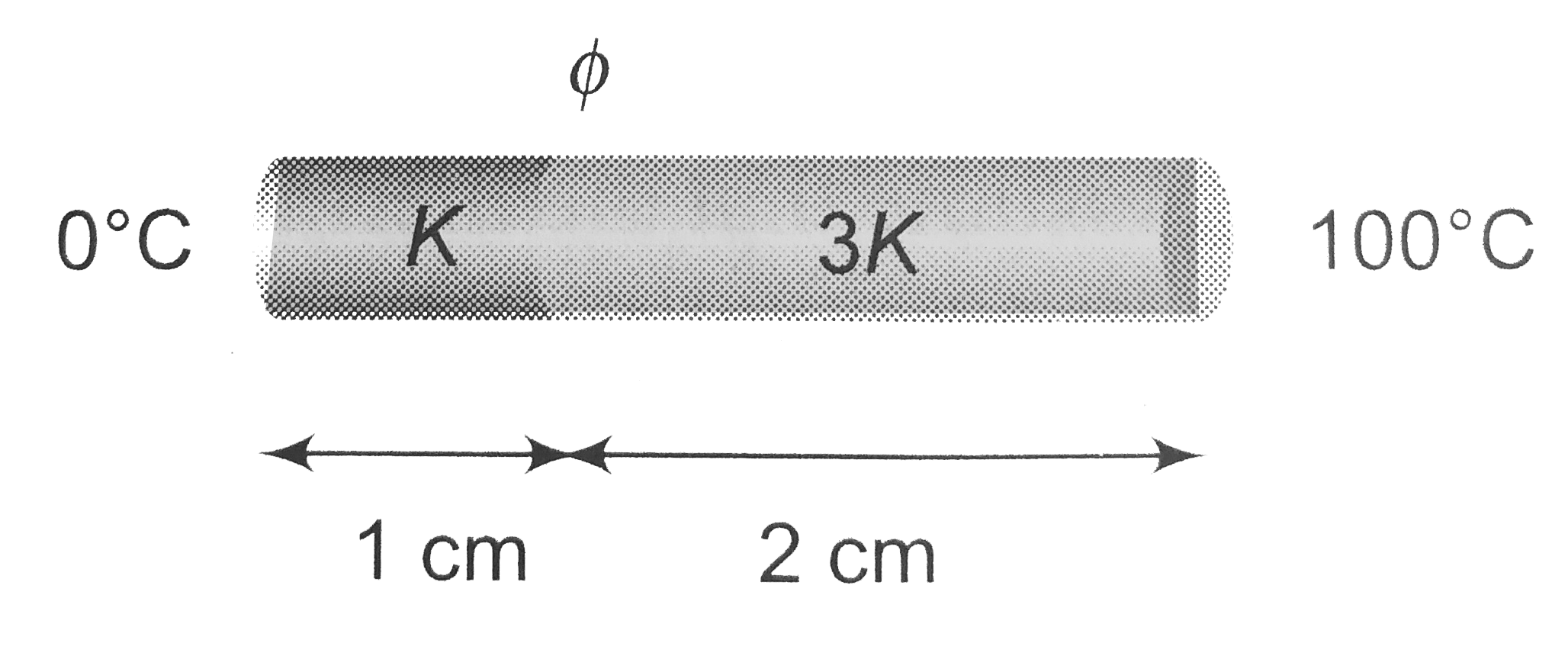 View Solution
View SolutionQuestion 84
Ice has formed on a shallow pond, and a steady state has been reached, with the air above the ice at −5.0∘C and the bottom of the pond at 40∘C. If the total depth of ice + water is 1.4m, (Assume that the thermal conductivities of ice and water are 0.40 and 0.12cal/mC∘s, respectively.)
The thickness of ice layer isView SolutionQuestion 86
A wall has two layers A and B each made of different materials. The layer A is 10cm thick and B is 20 cm thick. The thermal conductivity of A is thrice that of B. Under thermal equilibrium temperature difference across the wall is 35∘C. The difference of temperature across the layer A is View SolutionQuestion 87
Two rods (one semi-circular and other straight) of same material and of same cross-sectional area are joined as shown in the figure. The point A and B are maintained at different temperature. Find the ratio of the heat transferred through a cross-section of a semi-circular rod to the heat transferred through a cross section of the straight rod in a given time.
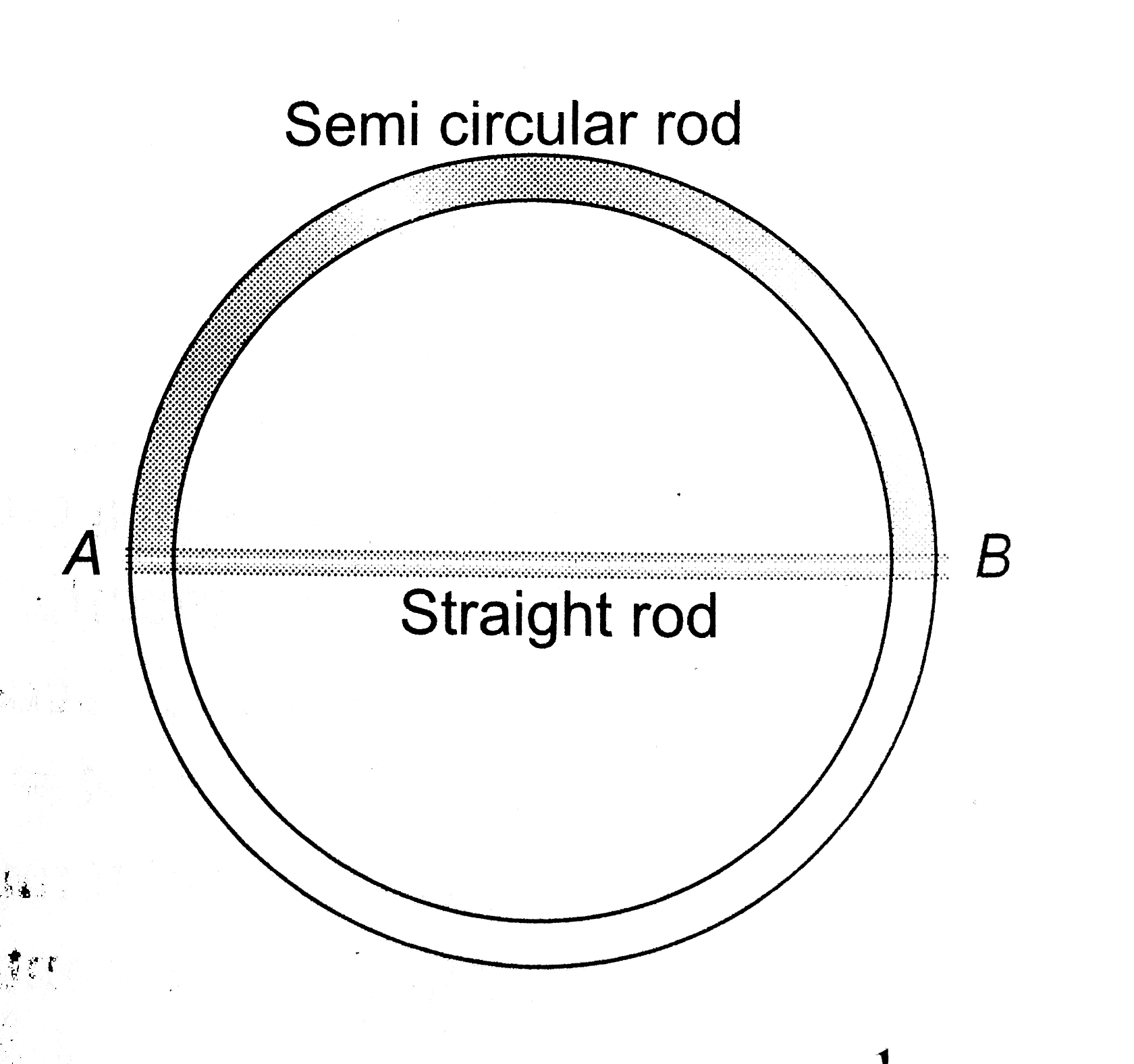 View Solution
View SolutionQuestion 88
Two spheres of different materials one with double the radius and one-fourth wall thickness of the other are filled with ice. If the time taken for complete melting of ice in the larger sphere is 25 minutes and for smaller one is 16 minutes, the ratio of thermal conductivities of the materials of larger sphere to that of smaller sphere is:View SolutionQuestion 90
A cylinder of radius R made of a material of thermal conductivity K1 is surrounded by a cylindrical shell of inner radius R and outer radius 2R made of a material of thermal conductivity K2. The two ends of the combined system are maintained at two different temperatures. There is no loss of heat across the cylindrical surface and the system is in steady state. The effective thermal conductivity of the system is View SolutionQuestion 93
A wall has two layers A and B each made of different materials. Both the layers have the same thickness. The thermal conductivity of materials A is twice of B. Under thermal equilibrium temperature difference across the layer B is 36∘C. The temperature difference across layer A is View SolutionQuestion 97
Two identical rectangular rods of metal are welded end to end in series between temperature 0∘C and 100∘Cand10J of heat is conducted (in steady state process) through the rod in 2.00min. if 5 such rods are taken and joined as shown in figure maintaining the same temperature difference between A and B, then the time in which 20J heat will flow through the rods is
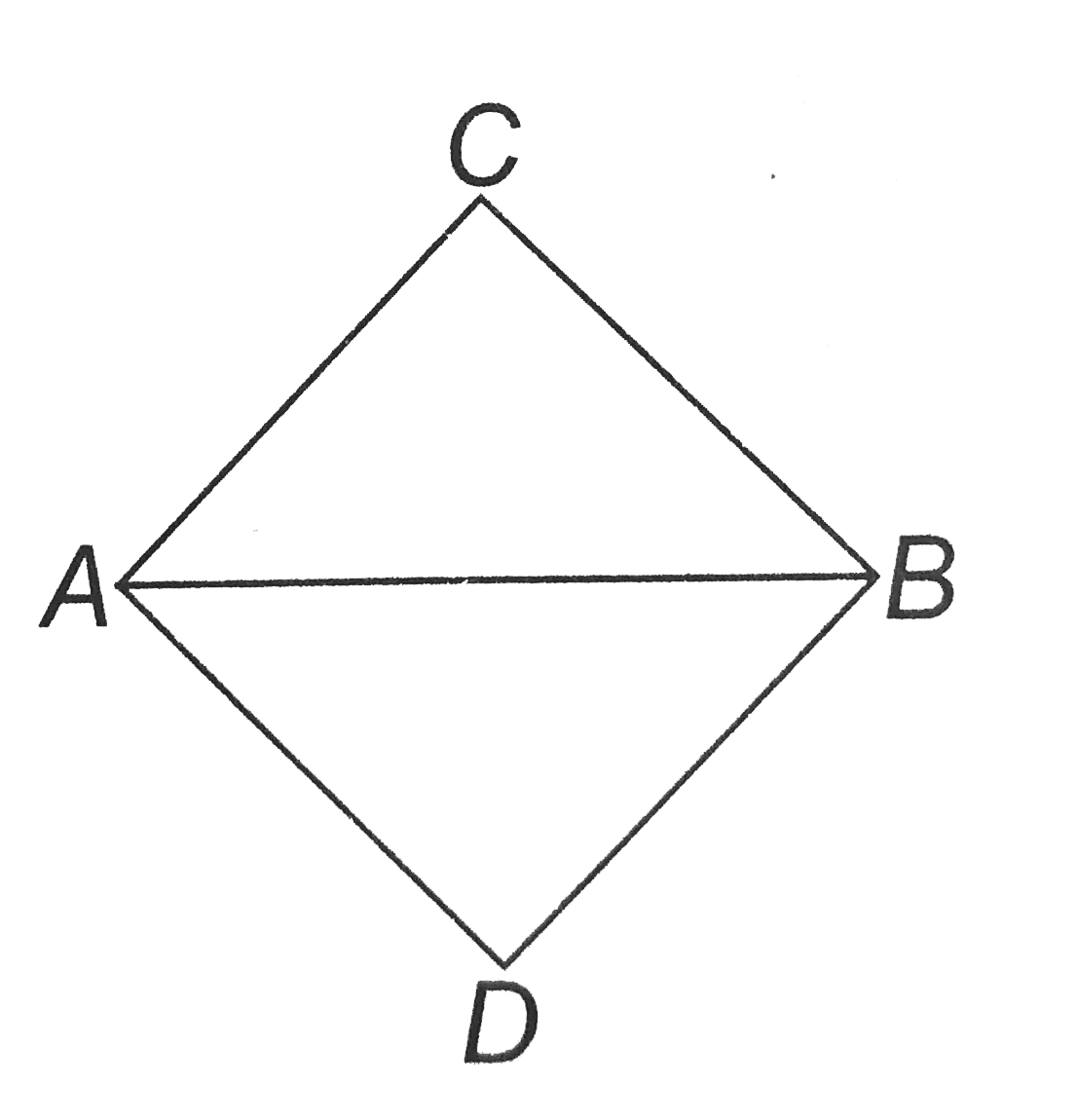 View Solution
View SolutionQuestion 98
Figure shows in cross section a wall consisting of four layers with thermal conductivities K1=0.06W/mK,K3=0.04W/mKandK4=0.10W/mK. The layer thickness are L1=1.5cm,L3=2.8cmandL4=3.5cm. The temperature of interfaces is as shown in figure. energy transfer through the wall is in steady state. the temperature of the interface between layer 3and4 is:
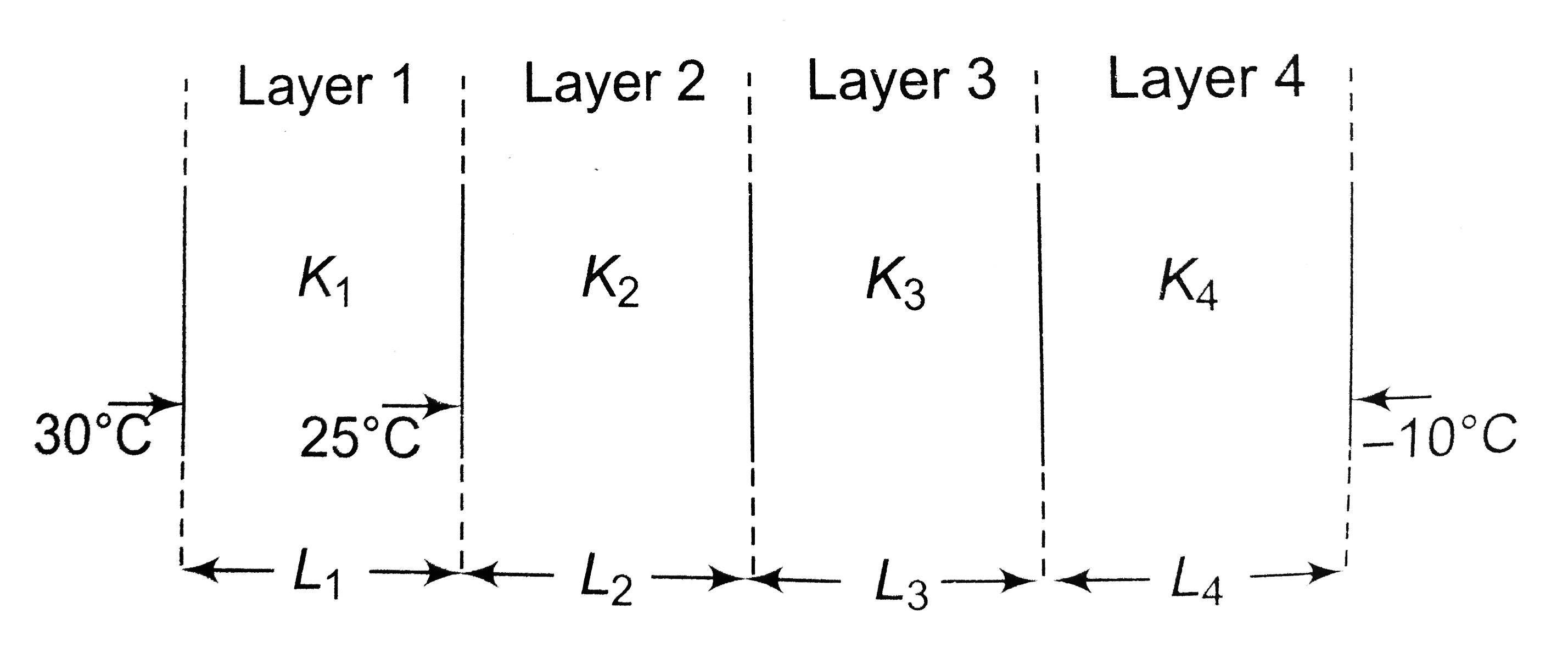 View Solution
View SolutionQuestion 101
A cylinder A of a material of thermal conductivity K1 is surrounded by a cylindrical shell of inner radius equal to the cylinder. The shell is made of a material of thermal conductivity K2. The two ends of the combined system are maintained at two different temperature. if the effective thermal conductivity of the system is 4K1+5K29, find the rate of outer radius of the shell to the radius of the cylinder.
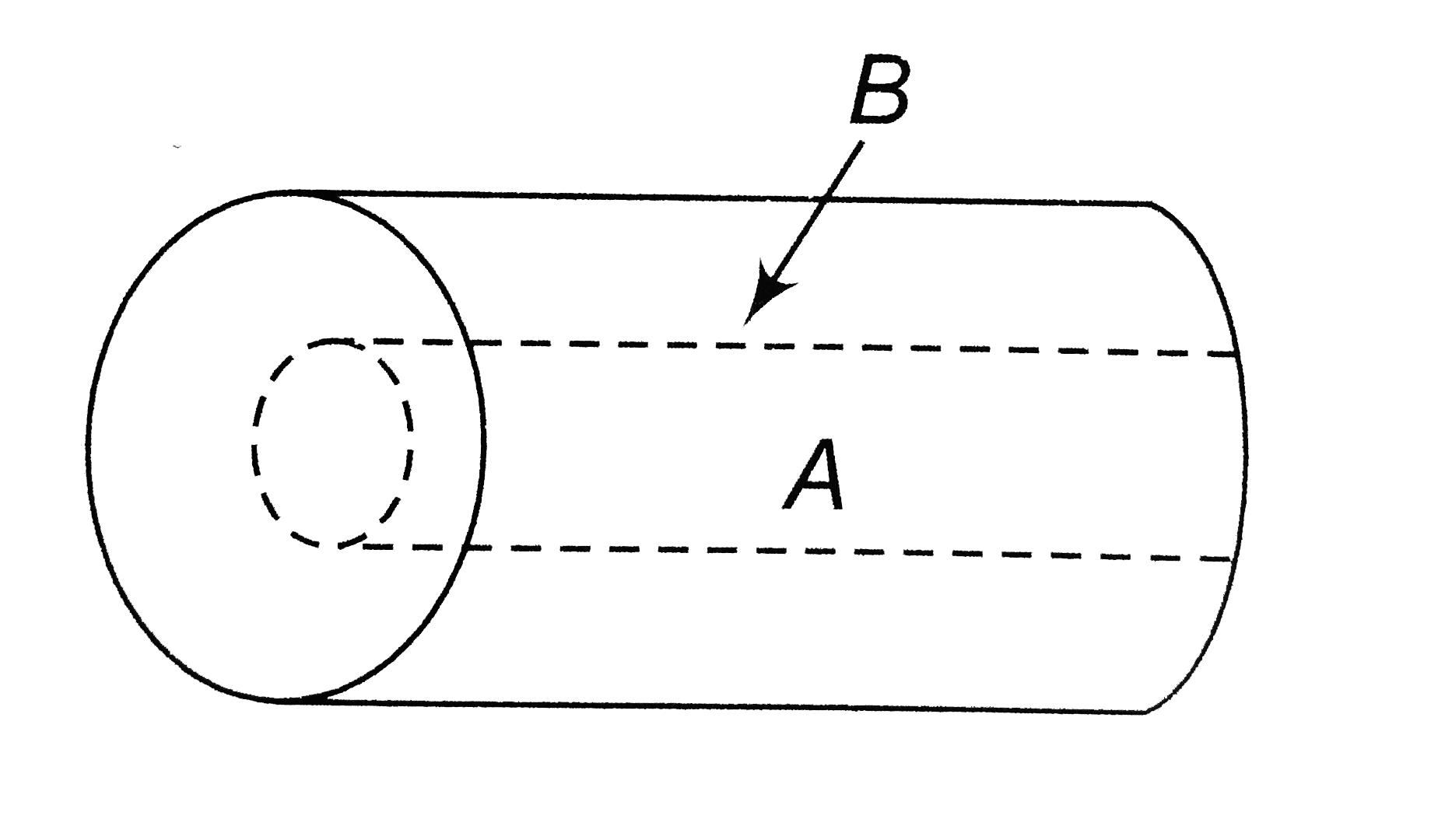 View Solution
View SolutionQuestion 103
A slab X of thickness 't', thermal conductivity 'K' and area of cross-section 'A' is placed in thermal contact with another slab Y which is 2n2 times thicker, 4n times conductive and having n times larger cross-section area. If the outside face of X is maintained at 100∘C, the outside face of Y at 0∘C, then the temperature of the junction is represented by the graph (n>0)View SolutionQuestion 104
The graph shown gives the temperature along an X axis that extends directly through a wall consisting of three layers A, B and C. The air temperature on one side of the wall is 150∘C and on the other side is 80∘C. Thermal conduction through the wall is steady. Out of the three layers A B and C, thermal conductivity is greatest of the layer
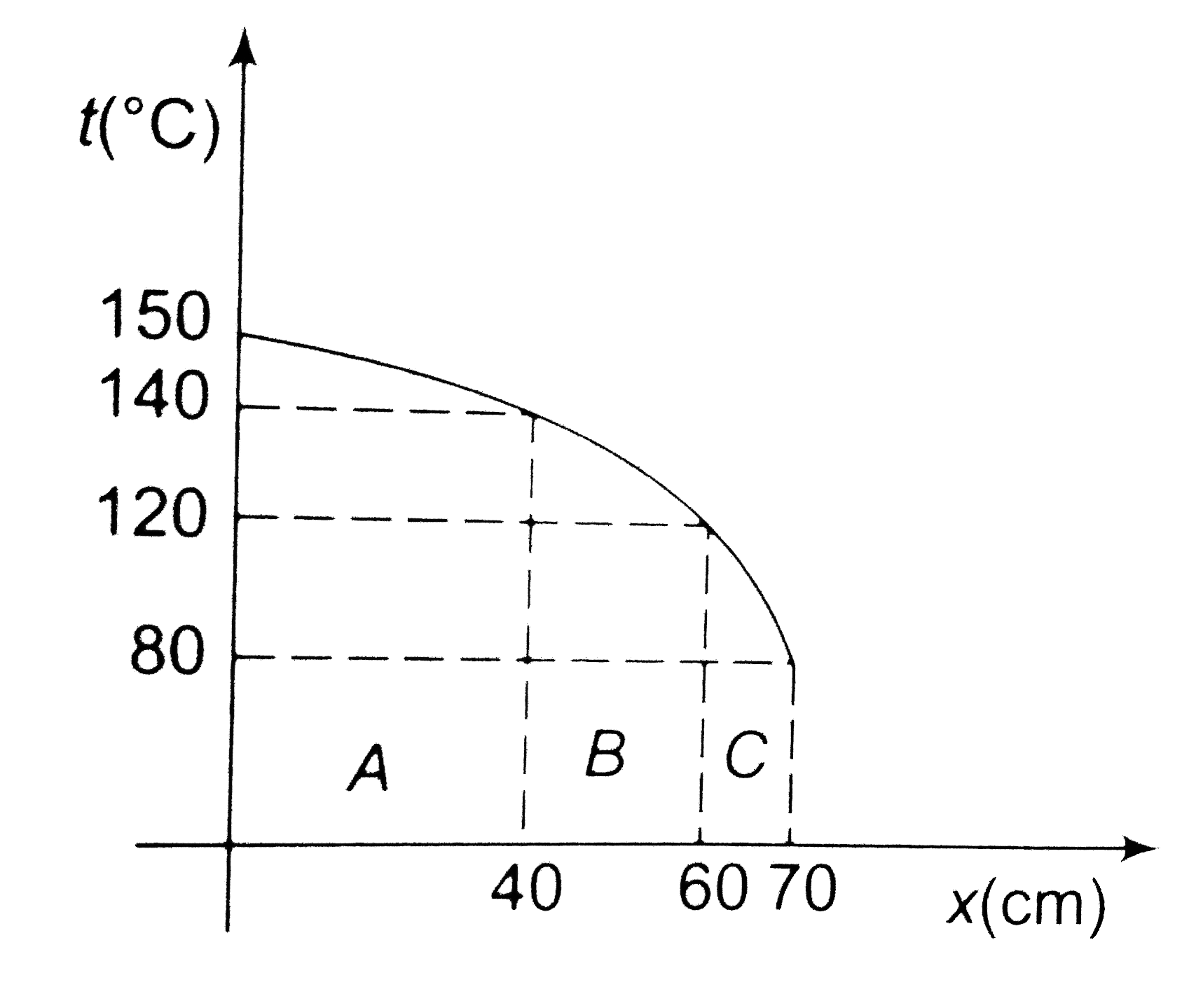 View Solution
View SolutionQuestion 114
By virtue of some internal mechanism, temperature of spherical shell is maintained in steady state which emits radiation like black body while kept in vaccum and isolated from all radiation. If this shell is enveloped by another shell B of same radius, still emitted like a black body, find the ratio of temperatures of shell B and shell A when it was alone:View SolutionQuestion 123
The maximum energy is the thermal radiation from a hot source occurs at a wavelength of 11×10−5cm. According to Wien’s law, the temperature of this source (on Kelvin scale) will be n times the temperature of another source (on Kelvin scale) for which the wavelength at maximum energy is 5.5×10−5 cm. The value of n is:View SolutionQuestion 127
A black body radiated maximum energy around a particular wavelength at a given temperature. If the temperature of the black body is now changed so that it radiates maximum energy around a wavelength n time the original wavelength (n<1) then power radiate by it will increases by a factor of:View SolutionQuestion 129
The thermal emissivitites of two bodies A and B are in the ratio of 1/e. The outer surface area of the bodies are same and they radiate the energy at the same rate. Find the ratio of the wavelength corresponding to the maximum spherical radiance in the radiation from A to maximum spectral radiance in the radiation from B.View SolutionQuestion 131
Three discs, A, B and C having radii 2m, 4m and6m respectively are coated with carbon black on their outer surfaces. The wavelengths corresponding to maximum intensity are 300nm,400nm and 500nm, respectively. The power radiated by them are QA,QBandQC respectively
(a) QA is maximum (b) QB is maximum (c) QC is maximum (d) QA=QB=QCView SolutionQuestion 133
Two wires A and B of the same cross sectional areas. Young's moduli Y1 and Y2 and coefficients of linear expansion α1 and α2 respectively are joined together and fixed between rigid supports at either ends. The tension in the compound wire when wire A is heated and wire B is cooled at different temperature is same when wire A alone is cooled at the same temperature as wire B earlier.
Find correct oprtion.View SolutionQuestion 134
A piece of metal weighs 46 g in air and 30 g in lipuid of density 1.24×103kgm−3 kept at 270C. When the temperature of the liquid is raised to 420C the metal piece weights 30.5 g . The density of the liqued at 420C is 1.20×103kgm−3. Calculate the coefficient of linear expandsion of the metal.View SolutionQuestion 135
A small ball of mass m is dropped from an aeroplane moving at 50m height above the ground with a speed of 25√2metre/sec if half of the mechanical energy of ball with respect to ground is lost as a thermal energy due to air friction. The change in the temperature of the ball as it lands on the ground is. specific heat capacity of ball is 56.25J/kg. (g=10m/sec2)View SolutionQuestion 136
A current of 2.50 A passing through a heating coil immersed in 180g of paraffin (specific heat capacity 2.00Jg−1K−1) contained in a 100g calorimeter (specific heat capacity 0.400Jg−1K−1) raise the temperature from 5∘C below room temperature to 5∘C above room temperature in 100s. the reading of the voltmeter connected across the heating coil isView SolutionQuestion 137
A simple seconds pendulum is constructed out of a very thin string of thermal coefficient of linear expansion α=20×10−4/∘C and a heavy particle attached to one end. The free end of the string is suspended from the ceiling of an elevator at rest. the pendulum keeps correct time at 0∘C. when the temperature rises to 50∘C, the elevator operator of mass 60kg being a student of Physics accelerates the elevator vertically, to have the pendulum correct time. the apparent weight of the operator when the pendulum keeps correct time at 50∘C is (Take g=10m/s2)View SolutionQuestion 138
An insulated chamber at a height h above the earth's surface and maintained at 30∘C has a clock fitted with an uncompensated pendulum. The maker of the clock for the chamber mistakenly design it to maintain correct time at 20∘C at that height. it is found that if the chamber were brought to earth's surface the clock in it would click correct time at 30∘C. the coefficient of linear expansion of the material of pendulum is (earth's radius is R)View SolutionQuestion 140
If accidently the calorimeter remained open to atmosphere for some time during the experiment, due to which the steady state temperature comes out to be 30∘C, then total heat loss to surrounding during the experiment, is (Use the specific heat capacity of the liquid from previous questions).View SolutionQuestion 141
Four spheres A, B, C and D have their radii in arithmetic progression and the specific heat capacities of their substances are geometric progression. If the ratios of heat capacities of D and B to that of C and A are as 8:27. The ratio of masses of B and A is: (assume same density for all spheres)View SolutionQuestion 142
As part of an experiment to determine the latent heat of vaporisation of water, a student boils some water in a beaker using an electric heater as shown below. The student notes two sources of error.
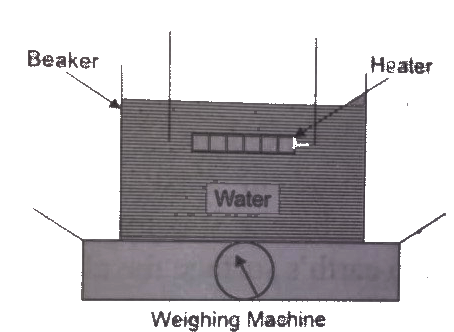
Error-1: thermal energy is lost from the sides of the beaker
Error -2: As the water is boling water splashes out of the beaker
Which of the following gives the correct effect of these two errors on the calculated value for the specific lalent heat? View SolutionQuestion 143
Two identical conducting rods are first connected independently to two vessels, one containing water at 100∘C and the other containing ice at 0∘C. In the second case, the rods are joined end to end and connected to the same vessels. Let q1andq2 gram per second be the rate of melting of ice in the two cases respectively. The ratio q1q2 isView SolutionQuestion 147
Equal volumes of water and alcohol when put in similar calorimeters take 100sec and 74sec respecively to cool from 50∘C to 40∘C. The thermal capacity of each calorimeter in numerically equal to the volume of either liquid. The specific gravity of alcohol is 0.8 if the specific heat capacity of water is 1cal/gm, the specific heat capcity of alcohol willView SolutionQuestion 150
A sysem is supplied power of 10W. Temperature of the system becomes constant at 50∘C. With temperature of surrounding at 20∘C. When power is switched off system cools from t∘C to (t/m)∘C in one minute. The heat capacity of the system is 1200J/∘C. find the limiting value of n.View SolutionQuestion 164
Assertion : A solid sphere of copper of radius R and a hollow sphere of the same material of inner radius r and outer radius R are heated to the same temperature and allowed to cool in the same environment. The hollow sphere cools faster.
Reason : Rate of cooling is according to Stefan's law which is EαT4View SolutionQuestion 199
A cylindrical metallic rod in thermal contact with two reservation of heat at its two ends conducts an amount of heat Q in time t. The metallic rod is melted and the material is formed into a rod of half the radius of the original rod. What is the amount of heat conducted by the new rod when placed in thermal contact with the two reservation in time t?View SolutionQuestion 203
A slab of stone of area of 0.36m2 and thickness 0.1m is exposed on the lower surface to steam at 100∘C. A block of ice at 0∘C rests on the upper surface of the slab. In one hour 4.8kg of ice is melted. The thermal conductivity of slab is
(Given latent heat of fusion of ice =3.63×105Jkg−1)View SolutionQuestion 208
On observing light from three different stars P, Q and R, it was found that intensity of violet colour is maximum in the spectrum of P, the intensity of green colour is maximum in the spectrum of R and the intensity of red colour is maximum in the spectrum of Q. if TP, TQ and TR are respective absolute temperature of P, Q and R. then it can be concluded from the above observation thatView SolutionQuestion 243
Assertion : The equivalent thermal conductivity of two plates of same thickness in contact (series) is less than the smaller value of thermal conductivity.
Reason : For two plates of equal thickness in contact (series) the equivalent thermal conductivity is given by
1K=1K1+1K2View SolutionQuestion 249
A lead bullet just melts when stopped by an obstacle. Assuming that 25 per cent of the heat is absorbed by the obstacle, find the velocity of the bullet if its initial temperature is 27∘C . (Melting point of lead =327∘C, specific heat of lead =0.03cal/g.∘C, latent heat of fusion of lead =6cal/g,J=4.2J/cal).View SolutionQuestion 254
Two rods, one of aluminium and the other made of steel, having initial length l1andl2 are connected together to from a single rod of length l1+l2. The coefficients of linear expansion for aluminium and steel are αaandαs and respectively. If the length of each rod increases by the same amount when their temperature are raised by t0C, then find the ratio l1/(l1+l2) View SolutionQuestion 255
2kg of ice at 20∘C is mixed with 5kg of water at 20∘C in an insulating vessel having a negligible heat capacity. Calculate the final mass of water remaining in the container. It is given that the specific heats of water & ice are 1kcal/kg/∘C and 0.5
kcal/kg/∘C while the latent heat of fusion of ice is 80kcal/kgView SolutionQuestion 259
The temperature of the two outer surfaces of a composite slab consisting of two materials having coefficient of thermal conductivity K and 2K and thickness x and 4x respectively are T2 and T1(T2>T1). The rate of heat transfer through the slab in steady state is (AK(T2−T1)x)f. where, f is equal to
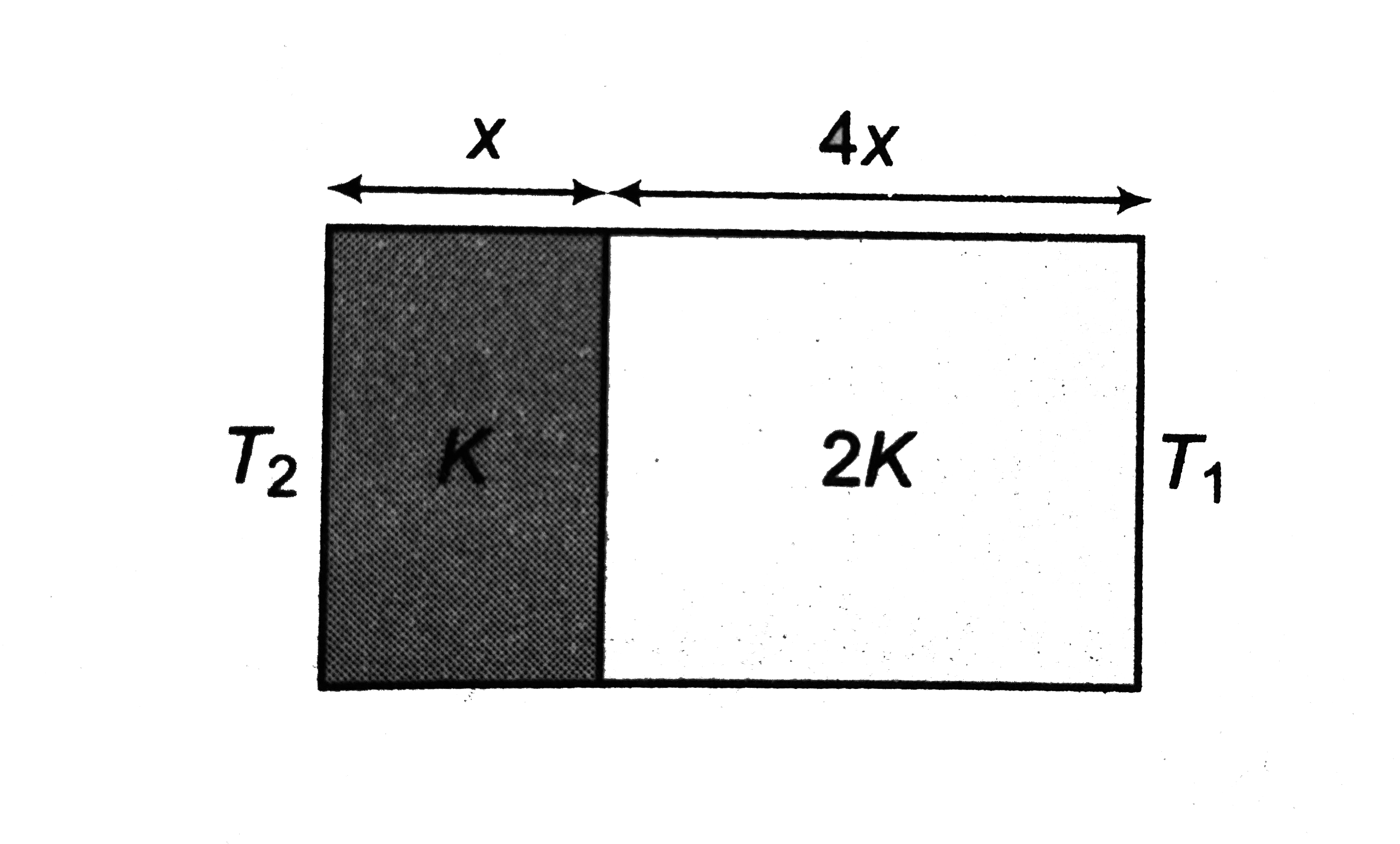 .View Solution
.View SolutionQuestion 263
Two metallic spheres S1andS2 are made of the same material and have got identical surface finish. The mass of S1 is thrice that of S2. Both the spheres are heated to the same high temperature and placed in the same room having lower temperature but are thermally insulated from each other. the ratio of the initial rate of cooling of S1 to that of S2 is
(a)13(b)1√3(c)√31(d)(13)13View SolutionQuestion 264
Three rods of identical cross-sectional area and made from the same metal from the sides of an isosceles triangle ABC, right-angled at B. The point A and B are maintained at temperatures T and √2 T respectively. In the steady state, the temperature of the point C is Tc. Assuming that only heat conduction takes places, Tc/T isView SolutionQuestion 265
Two metal cubes A and B of same size are arranged as shown in Figure. The extreme ends of the combination are maintained at the indicated temperatures. The arrangement is thermally insulated. The coefficients of thermal conductivity of A and B are 300W/m∘Cand200W/m∘C, respectively. After steady state is reached the temperature t of the interface will be ......
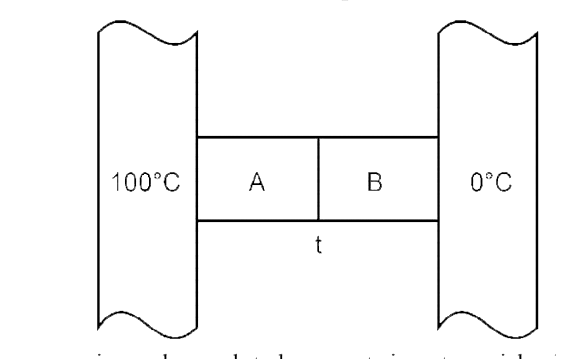 View Solution
View SolutionQuestion 266
The intensity of radiation emitted by the sun has its maximum value at a wavelength of 510 nm and that emitted by the North star has the maximum value at 350 nm. If these stars behave like black bodies, then the ratio of the surface temperatures of the sun and the north star is View SolutionQuestion 272
A composite bar of length L=L1+L2 is made up from a rod of material 1 and of length L1 attached to a rod of material 2 and of length L2 as shown. If α1 and α2 are their respective coefficient of linear expansion, then equivalent coefficient of linear expansion for the composite rod isView Solution

